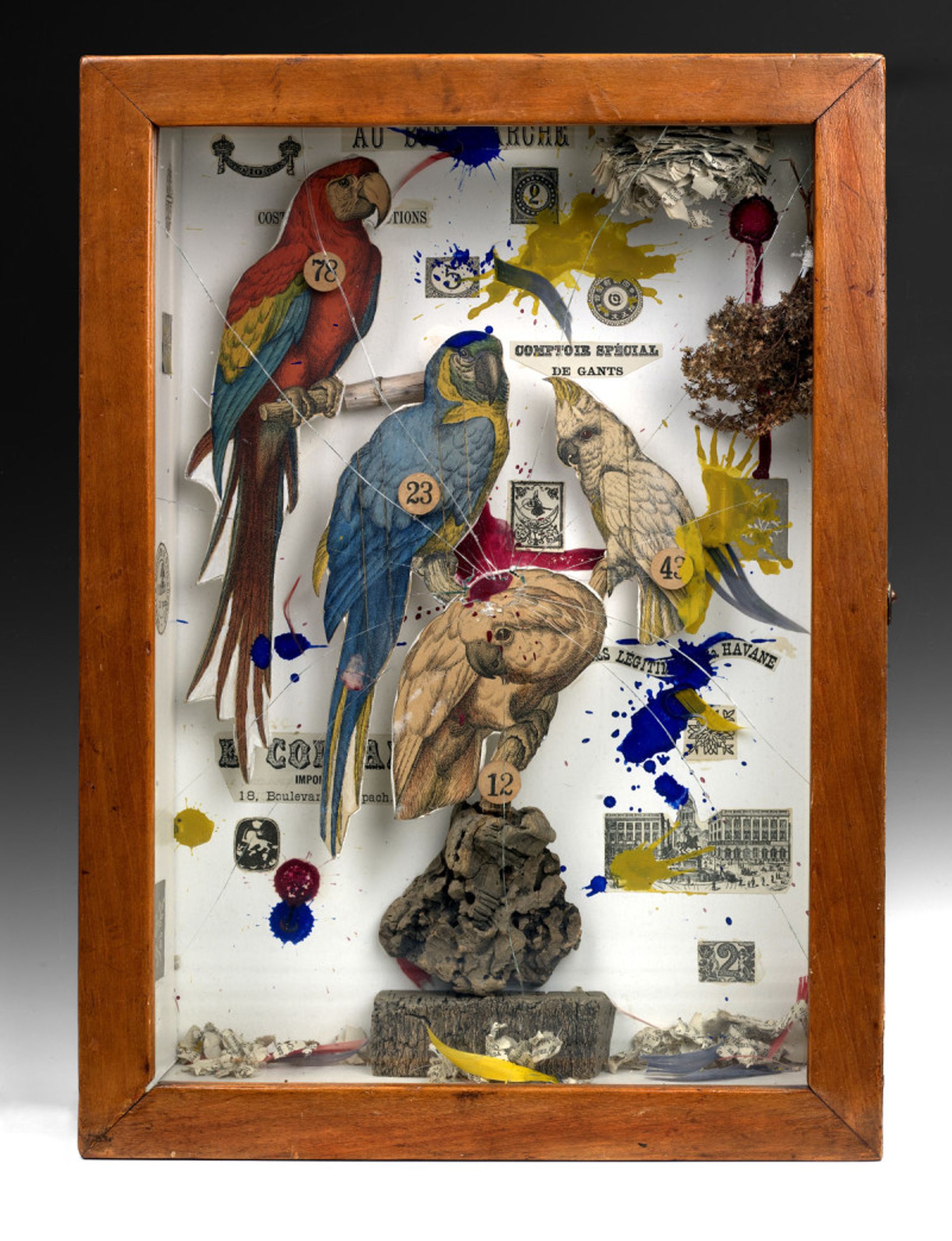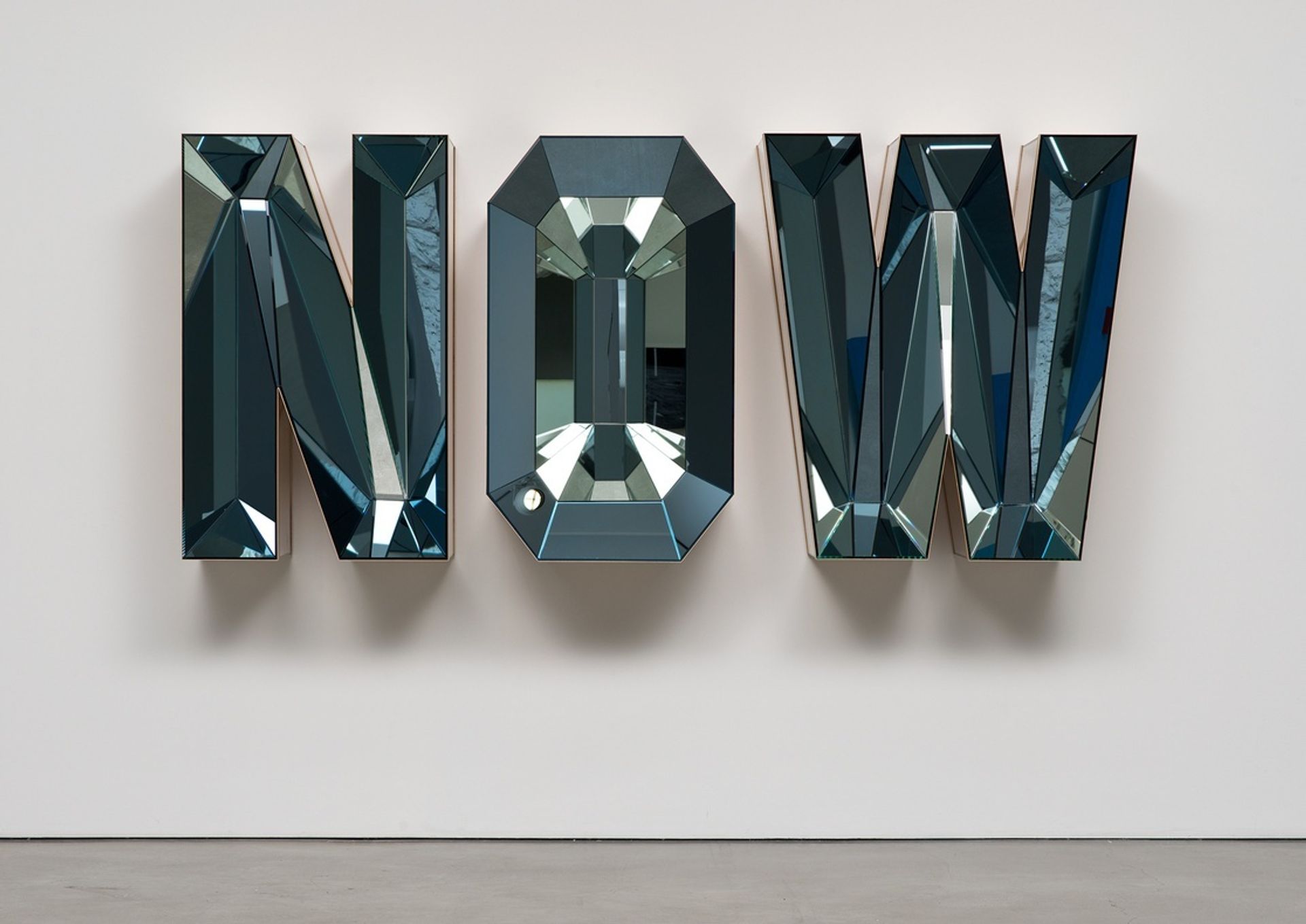John Waters: Beverley Hills John, Spruth Magers (until August 15)

Beverly Hills John makes his London art world debut with a predictably provocative and at times hilarious assault on the boundaries of taste and decorum. But what else would you expect from the all-time maestro of high camp schlock? Waters certainly doesn't disappoint with a parade of chest wigs, outrageous facial enhancement (even Lassie isn’t spared) and some good old black-humoured icon-bashing, including JFK and Jackie stalked by a stowaway Grim Reaper from the Seventh Seal, and a very squiffy Liz Taylor. A baby blue kiddie buggy emblazoned with the logos of San Francisco’s hardcore gay clubs is his response to the preponderance of gay dads now parading down today’s Castro Street and another piece of taboo bashing comes in the form of a new, kiddie-friendly edit of the Pink Flamingos script, which is now delivered by loveable moppets and rendered infinitely more disquieting than the original.
Joseph Cornell: Wanderlust, Royal Academy (until September 27)

The quiet, self taught man of Utopia Parkway, Queens, didn't need to travel beyond New York City limits to conjure up his poetic parallel universes that entranced the likes of Duchamp, Ernst, Robert Motherwell and Mark Rothko. His magical boxes continue to occupy an exceptional and idiosyncratic place in art history, hovering between media and movements and straddling painting, sculpture and collage. Not only are we here treated to some of Cornell’s most enchanting “shadow boxes” but another highlight of this beautifully curated show—itself laid out rather like a giant Cornell casket—is the revelation (to me at least) that he was equally adept at cutting, combining and montaging the moving image, making wonderfully bizarre movies that also combine the mundane with the marvelous to create something completely new and original.
Philip Guston, Timothy Taylor (until July 11)

There are only a few days left to immerse yourself in the mad, bad, deeply disquieting world of an artist whose smeary malevolent canvases made during the last two decades of his life may appear crudely cartoonish but are always anything but simplistic. To the acute consternation of his contemporaries, Guston abruptly eschewed Abstract Expressionism to pursue his own bleakly bizarre brand of figuration, producing paintings that have an uncanny ability to lodge themselves in the psyche with their scattered clunky props and sinister hooded figures that wait and watch. His cast of lurking presences manage to be both comical and threatening: even a bowl of cherries is laden with lumpen, sinister undertones. It’s hard to believe that Guston died in 1980—he is still the Big Daddy for so many young artists today.
Doug Aitken, Victoria Miro Mayfair (until 30 July)

Aitken’s multifarious Station to Station roadshow may have steamed into the Barbican Centre, but there’s a very different vibe over in Mayfair where his new work exudes a sinister synthetic alienation utterly at odds with the Barbi’s community love-in. Rendered in faceted mirror-like pieces of 80’s costume jewellery, the giant words NOW and END gleam implacably from the walls (scaled down they would make a great wearable diffusion range) while there’s a spurious geology in the show’s central fountain of icky, shiny, fake white stalagmites and -tites, bathed in bilious violet and sulfur light and emitting weird amplified plips and plops. There’s nothing natural about the two wall pieces, entitled New Land, either: made from gouged-out foam and coated in slick gleaming icy blue acrylic, their pocks and holes look as if they have been caused by gunfire.

